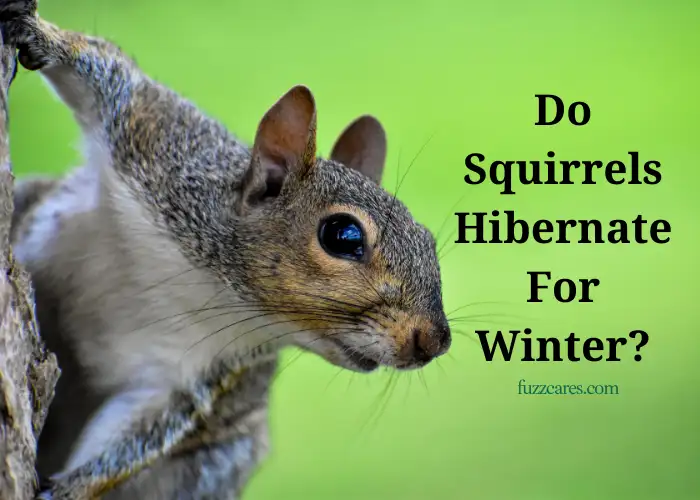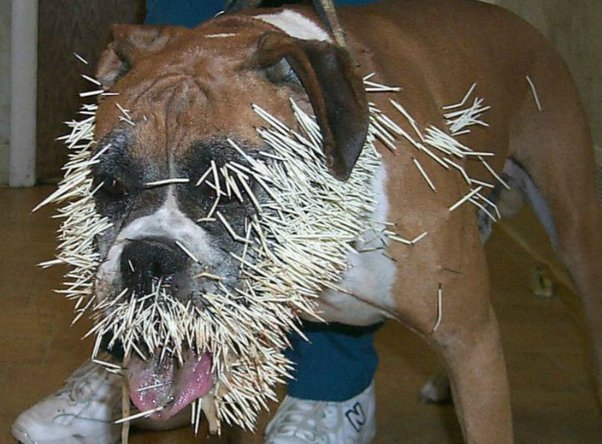Yes, they do! As the cold weather sets in and the days grow shorter, these energetic little creatures undergo a fascinating transformation. Instead of their usual bustling activities, squirrels enter into a state of deep sleep, known as hibernation.
This survival strategy allows them to conserve energy and endure the harsh winter conditions. But what exactly happens during squirrel hibernation?
Let’s delve into the captivating world of these furry acrobats and unravel the secrets behind their winter slumber. Grab a cozy blanket and join me on this enchanting journey into the mysterious world of squirrel hibernation.
Do Squirrels Hibernate for the Winter?
Squirrels are fascinating creatures that can be found in various parts of the world. They are known for their agile climbing abilities, adorable appearance, and their fondness for hoarding nuts.
One question that often arises is whether squirrels hibernate during the winter months. In this article, we will explore the hibernation patterns of squirrels, their behaviors during winter, and the adaptations that help them survive the colder seasons.
Understanding Hibernation
Hibernation is a biological process that certain animals go through to survive harsh environmental conditions, primarily during the winter.
During hibernation, an animal’s metabolic rate significantly slows down, reducing their energy consumption. This state allows them to conserve energy and survive without needing to actively search for food.
Types of Squirrels
Before delving into the hibernation habits of squirrels, it’s important to note that not all squirrels hibernate. There are over 200 squirrel species, but only a handful actually undergo hibernation. Ground squirrels, such as the Arctic ground squirrel and the 13-lined ground squirrel, are well-known hibernators. However, tree squirrels, like the gray squirrel, red squirrel, and fox squirrel, do not hibernate.
Winter Behaviors of Tree Squirrels
While tree squirrels don’t hibernate, they do exhibit unique behaviors to cope with the winter months. Let’s explore some of these adaptations:
Food Storage
One of the most well-known behaviors of squirrels is their ability to hoard and store food. During autumn, squirrels actively gather and bury nuts, acorns, and seeds in multiple locations, known as “middens.” These hidden food caches serve as a vital source of sustenance during winter when food becomes scarce.
Increased Activity
Unlike hibernating animals, tree squirrels remain active throughout the winter. You may have spotted them scurrying around in search of buried nuts or hopping from tree to tree. Squirrels utilize their keen sense of smell and memory to locate their hidden food reserves. This constant activity helps them stay nourished during the colder months.
Building Nests
To protect themselves from the harsh weather, squirrels construct nests known as “dreys.” Dreys are typically made from twigs, leaves, and other natural materials, providing insulation against the cold. Squirrels build these nests high up in trees to avoid ground predators and ensure warmth during chilly nights.
Thermoregulation
Squirrels have specific adaptations to withstand low temperatures. Their coats become denser and thicker during winter, providing better insulation. Additionally, squirrels have the ability to constrict blood vessels in their extremities, reducing heat loss. These physiological mechanisms help them maintain a stable body temperature despite the cold.
Ground Squirrel Hibernation
Unlike tree squirrels, ground squirrels go into a true hibernation state during winter. Let’s take a closer look at the hibernation patterns of these fascinating creatures:
Hibernation Chambers
Ground squirrels prepare for hibernation by constructing elaborate underground burrows. These burrows consist of multiple chambers, each serving a specific purpose. One such chamber, known as the “hibernaculum,” is where the ground squirrel will spend most of its time during winter.
Triggering Hibernation
The start of hibernation is triggered by external environmental cues, such as declining temperatures or changes in daylight duration. When these conditions signal the approach of winter, ground squirrels enter their hibernaculum and prepare for a deep sleep.
Metabolic Changes
During hibernation, ground squirrels experience significant physiological changes. Their body temperature drops to match the surrounding environment, and their metabolic rate decreases dramatically. These adaptations allow them to survive on stored body fat without needing to eat.
Periodic Wakening
Although ground squirrels may seem to be in a continuous state of sleep, they periodically awaken from hibernation. These wakening periods are necessary to restore their energy levels, eliminate waste, and reposition themselves within their burrows. However, they quickly return to their hibernating state once these tasks are completed.
Hibernation Durations
The duration of hibernation varies depending on the species and geographical location. Some ground squirrels may hibernate for several months, while others undergo shorter periods of hibernation. Factors such as climate, available food resources, and genetic influences contribute to the length of their hibernation.
Why don’t we see squirrels during the winter?
We don’t see squirrels as frequently during the winter because, despite not hibernating like some other animals, they exhibit reduced activity and spend more time in their nests or dens. This behavior, often referred to as torpor, helps them conserve energy and stay warm during the colder months.
They are also less visible due to the snowy landscape and the fact that their fur can blend in with the surroundings. Squirrels rely on the food they stored in the fall, so they do not need to forage as actively, reducing their need to be out and about.
The combination of reduced activity, camouflage, and a focus on food retrieval from caches means that squirrels are less frequently seen during the winter compared to the warmer months when they are more active and visible.
What Do Squirrels Do in Winter?
Squirrels are known for their adaptability and have several strategies to survive the winter months when food becomes scarce and the weather turns cold. Here are some of the things that squirrels do in winter:
- Food Storage: Squirrels are famous for their ability to hoard food. In the fall, they collect and store nuts, seeds, and acorns in various locations called “caches.” These caches serve as their primary food source during the winter. Squirrels have an excellent memory that helps them locate these hidden food stores even under a blanket of snow.
- Reduced Activity: During the winter, squirrels tend to be less active. They conserve energy by staying in their nests or dens for extended periods, coming out primarily to retrieve food from their caches or search for food that might be available in milder weather.
- Nest Building: Squirrels build nests, called dreys, in trees to provide shelter from the cold. These nests are typically made from twigs, leaves, and other materials. Dreys are insulated and offer protection from the elements.
- Huddling: In exceptionally cold weather, multiple squirrels might share a drey or nest to conserve heat. This behavior is more common in some squirrel species than others.
- Eating Bark and Buds: When food supplies are extremely limited, squirrels may resort to eating the inner bark of trees and shrubs, as well as buds. While not as nutritious as their typical diet, it can help sustain them during the winter.
- Periodic Feeding: Squirrels don’t hibernate like some other animals, but they may go into a state of torpor during particularly cold or harsh weather. In torpor, their metabolic rate decreases, and they become less active. However, they can quickly wake up and eat if necessary.
- Risk of Starvation: Despite their adaptations, winter can still be a challenging time for squirrels. Harsh conditions and depleted food supplies can lead to high mortality rates, especially among young or less experienced squirrels.
- Scavenging: Squirrels are opportunistic, and in milder winters, they may scavenge for food from bird feeders, garbage cans, or other sources if available.
Squirrel Survival Strategies
Whether they hibernate or remain active, squirrels have evolved impressive strategies to survive the winter months:
Cache Watching
When food is scarce, grey squirrels, red squirrels, and fox squirrels rely heavily on their food caches. To minimize the chance of theft or spoilage, squirrels engage in “cache watching.” They frequently visit and inspect their buried food reserves, ensuring they are intact and ready to be consumed when needed.
Scavenging and Adaptability
In times of scarcity, squirrels demonstrate their resourcefulness by scavenging for alternative food sources. They may search for dormant insects, tree buds, or bark to supplement their diet. Squirrels are known for their adaptability, quickly adjusting their foraging behaviors according to the availability of food.
Extended Wakefulness
Even during winter, squirrels occasionally emerge from their dreys or burrows on milder days. They take advantage of these opportunities to replenish their energy reserves and engage in activities such as socializing, mating, and exploring. These brief periods of wakefulness are essential for their overall survival and well-being.
In summary, while some squirrel species, like ground squirrels, undergo true hibernation during winter, most tree squirrels do not. Tree squirrels employ various survival strategies, such as food caching, increased activity, and nest-building, to navigate the colder months successfully.
Understanding the distinction between hibernating and non-hibernating squirrels provides insight into the incredible adaptability and resilience of these charismatic creatures.
So next time you spot a squirrel scurrying about or searching for buried treasure, you’ll know they are not hibernating but utilizing their unique winter-survival skills.
Frequently Asked Questions
Do squirrels hibernate for the winter?
Yes, squirrels do hibernate for the winter, but not all species of squirrels hibernate. Ground squirrels and tree squirrels have different hibernation patterns.
What is hibernation for squirrels?
Hibernation is a state of inactivity where squirrels reduce their metabolic rate and lower their body temperature to conserve energy during the winter months when food is scarce.
Which squirrels hibernate?
Ground squirrels, such as chipmunks and prairie dogs, are known to hibernate. They burrow underground and enter a deep sleep throughout the winter season.
Do tree squirrels hibernate?
No, tree squirrels do not hibernate in the same way as ground squirrels. Instead of entering a deep sleep, they rely on food storage and nest insulation to survive the winter months.
How do hibernating squirrels prepare for winter?
Squirrels that hibernate gather food during the fall and store it in their burrows. They build up fat reserves to sustain themselves during the hibernation period.
What happens to squirrels during hibernation?
During hibernation, the body temperature of hibernating squirrels drops significantly, their heart rate slows down, and they enter a state of torpor. They awaken periodically to use their stored food and release waste products.
Final Thoughts
Squirrels do not hibernate for the winter, but they go through a period of increased inactivity called torpor. During this time, their body temperature drops, and their metabolism slows down to conserve energy.
Squirrels collect and store food during the autumn to sustain them through the winter months. They rely on their cached food supplies and may emerge during warmer spells to search for additional food.
While not true hibernators, squirrels exhibit fascinating adaptations to survive the winter season.

🐾 I’m Marquis, an animal enthusiast 🦁🐯 with a passion for both wild and home animal care. In the wild, I’ve studied majestic species like 🦍🐅, collaborating with conservationists. At home, I’m all about fostering loving environments for pets 🐶🐱🐦, with hands-on experience and shelter volunteering.




Leave a Reply